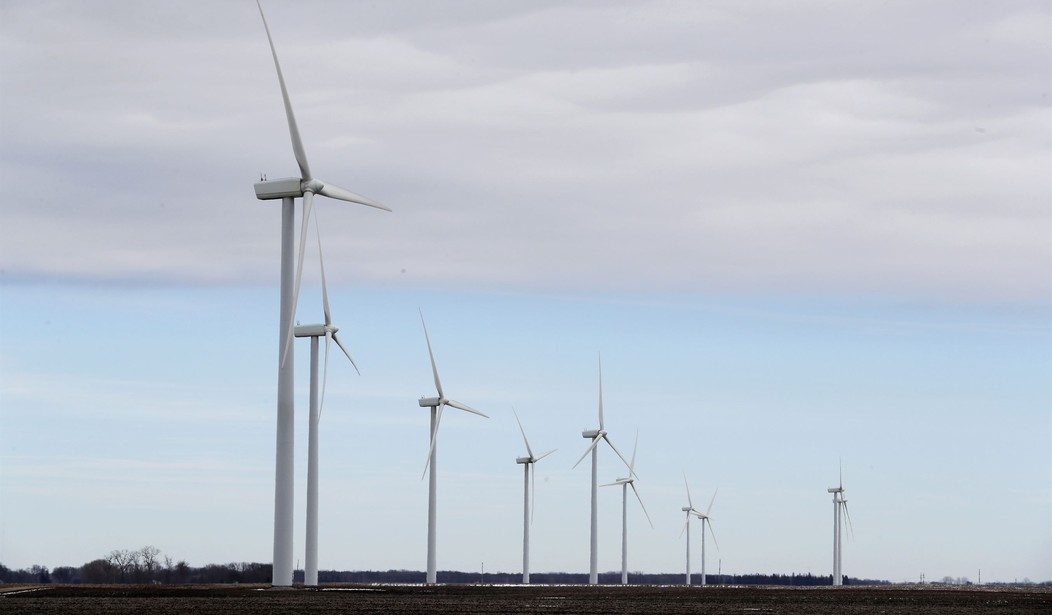You may have already heard about California Governor Gavin Newsom’s announcement last year that his state will ban the sale of gasoline-powered vehicles by 2035. Restrictions on how many non-electric vehicles can be sold will begin in just three years. This is making all of the climate alarmists very happy, of course, but there is a significantly large fly in the ointment of this plan. In order to charge up roughly 12.5 million EVs on a daily basis, the state will need to have a lot of electricity available on the power grid. But nobody seems to have run through all of the numbers with the Governor. Some people who actually did the math work with the Institute for Energy Research, and they have some bad news for Governor Newsom. The state’s plan is based on “a myriad of assumptions” about its electrical grid, and a lot of those assumptions are simply unrealistic in a very big way.
California has chosen to ban gasoline-powered vehicle sales as of 2035 and claims that the state will have enough electricity supply to support an all-electric vehicle fleet of 12.5 million cars by then. That surprises many since the state currently cannot even get through the summer/fall season without having to worry about rolling blackouts because of inadequate supplies. To meet EV electricity demand, California will need to build solar and wind power at a rate almost 5 times higher than that of the past decade since they are pushing the de-carbonization of their grid. It will also have to train its residents to charge their electric vehicles only at certain times of the day when excess power is available, i.e. in off-peak periods. California’s grid is already heavily stressed, and it is compelling much higher demand at the same time it is forcing more intermittent sourcing of electricity.
Under the state’s regulation, 35 percent of new 2026 car models sold must be zero-emission, ramping up to 100 percent in 2035. For an all-electric fleet, the state must triple the amount of electricity produced and deploy new solar and wind energy at almost five times the rate of the past decade. At the same time, they are forcing electrification of cars and trucks, California’s state law requires it to shift all of its power to renewable energy by 2045.
What we’re seeing here is the head-on collision of two bad pieces of policy that will crash into each other in barely a decade. One is the ban on gas-powered vehicles and the other is the state’s mandate that all power produced in California must come from renewable sources by 2045. As the linked report notes, industry officials were “surprised” by the announcement that there would be sufficient electricity to charge a fleet of vehicles that size when the state can barely avoid rolling blackouts today during the summer and autumn months today.
In order to reach that goal, California would need to immediately begin constructing enough solar and wind plants to literally triple the amount of electricity that is currently being generated. That means that they would need to put up new wind farms and solar plants at roughly five times the rate they have been able to build them over the past ten years.
Nobody thinks that can actually happen. Both rising prices and supply chain shortages have raised costs and delayed the development of new wind farms over the past two years. This trend is projected to continue. In fact, the completion of new wind installations in the United States dropped 77.5% in the third quarter of 2022 as compared to the previous year, despite generous subsidies from the federal government. No matter how much money the state government throws at the problem, they can’t magically wave their hands and make new power plants appear or make more electricity available on the grid.
Even if the state somehow was able to generate the bare minimum amount of electricity required, under the current plan, they would need to “train” the citizens of the state to only recharge their vehicles during certain times of the day when demand is low. That simply won’t work for some people, particularly shift workers who have to go to their jobs during overnight hours. And since when does the state government get to issue orders and tell people when they can or can’t plug something in? Are we suddenly living in China now? (I don’t know why I asked that. California is looking more and more like China every day in terms of autocratic authority.)
One final issue should also be addressed here. The first phase of EV mandates begins in 2026 when 35 percent of new 2026 car models sold must be zero-emission. What the state isn’t telling its residents is how they plan to enforce that and who will decide which 65% of shoppers will still be able to purchase gas-powered vehicles. If they reach that number by August, will the dealerships be forced to tell people, ‘sorry? You should have ordered sooner. Now come take a look at our supply of EVs that cost three times as much.’
This harebrained scheme is going to come crashing down on the state government’s head at some point. Sadly, many residents will pay the price for all of this. If you live in California, I will reiterate for the umpteenth time that you should really consider moving while you can still find an operational moving van to carry all of your stuff.








Join the conversation as a VIP Member